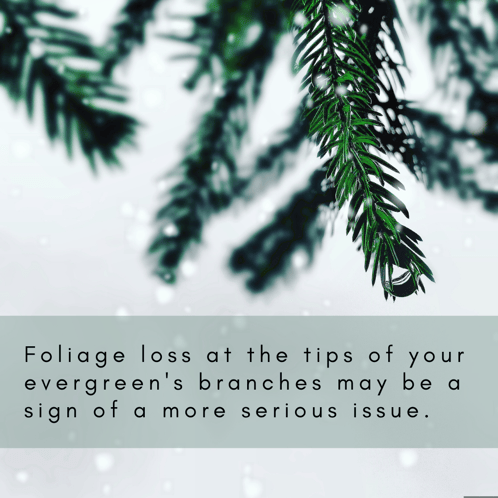As you're raking up the red and golden colored leaves that have fallen from your deciduous trees, you may notice some brown needles from your evergreens on the ground as well. After a closer inspection, you may see some foliage browning toward the interior of your evergreens.
But evergreens are supposed to stay green all year, right? Is that browning and shedding a sign of a sick tree, or is it normal?
Keep reading to find out!
Evergreens aren't actually forever green
Pines, arborvitaes, and Leyland cypresses may be called "evergreens," but their foliage doesn't really last forever. Evergreens produce new foliage and shed old foliage just like deciduous trees. The difference is evergreens don't shed all of their foliage at once.
Your evergreen produces new foliage every year, typically during the spring and summer. This new foliage, which can be found at the ends of the branches, can stay on your tree for 2-7 years, depending on the species.
Older foliage is closer to the interior of the tree. These needles or leaves are less efficient at photosynthesis and shaded by newer foliage, so they eventually turn brown and fall off a little bit at a time. You may not even notice this process because new foliage usually covers up what's happening with the old foliage.
Your evergreen's old needles or leaves may drop every two years, or there may be several years between drops. The old foliage may drop gradually or all at once. Many evergreens shed old foliage in the fall, but some shed in the spring or early summer. It just depends on the type of evergreen you have.
Seasonal needle drop typically brings no harm to your tree because it has already grown plenty of new foliage to replace the old, inefficient foliage. Your tree may look a little ragged during this process, but it should bounce right back.
But wait a second! You may be saying to yourself, "There were some needles on the ground last year, but there's a whole lot more this year! Does that mean my tree is sick?" Not necessarily!
Stress factors, including the weather, can play a big part in how much shedding you see. So even fluctuations in the amount of shedding isn't a huge cause for concern.
When needle drop needs your attention
So, when should evergreen foliage drop be concerning? If your evergreen is losing needles or leaves at the tips of its branches, that's not a good sign. Foliage out at the tips is young and still useful to the tree. If that foliage is dropping, you may be dealing with a fungal disease or insect issue.
A number of conditions can lead to abnormal needle drop. One of them is spider mite damage. Spider mites are tiny arachnids that leave spots on foliage as they suck out sap. You'll notice off-yellow, stippled foliage and maybe some light webbing if mites are involved.
Water stress can also cause abnormal needle drop. If your evergreen is left parched during the drier part of the summer, its foliage may drop earlier than normal. It may also drop more foliage than usual.
Similarly, excessively wet or poorly draining soil can lead to issues with your evergreen. Your tree may not be as vibrant, and an abnormal amount of foliage may drop prematurely.
Nutritional deficiencies and planting issues can lead to abnormal needle drop, too. For example, planting an evergreen under the eave of a house isn't a good idea, as it can lead to drought in the winter.

Is your evergreen suffering from abnormal or excessive foliage drop? Carolina Tree Care, serving home and commercial property owners in the Concord, NC area, can help!
If you're dealing with a pest problem, we offer multiple tree pest control options. If it's a nutrition problem you're dealing with, we offer fertilization treatments. If you're not sure if there actually is a problem, we can figure that out, too.








